
2016 ACSA/AISC Steel Design Student winners
By Justine Testado|
Wednesday, Sep 28, 2016
Related
During the yearly ACSA/AISC Steel Student Design Competition, students across North America get to flex their skills in inventive structural steel designs. Organized by the Association of Collegiate Schools of Architecture (ACSA) and supported by the American Institute of Steel Construction (AISC), this year's competition attracted 240 submissions from 745 students in 44 North American universities.
Students must use steel as their primary structure material and they have to pay special attention to incorporating steel-design innovations. Working solo or in teams, participants competed in two separate categories: The Tall Buildings category sought alternative design approaches for tall buildings and high-rises that respond to cultural, physical, and environmental aspects of place while embracing new technologies. For the Open category, students got to select the site and create the building program.
The jury picked 11 winning entries, which received $14,000 total in cash prizes.
Scroll down to see this year's winners.
TALL BUILDING CATEGORY WINNERS
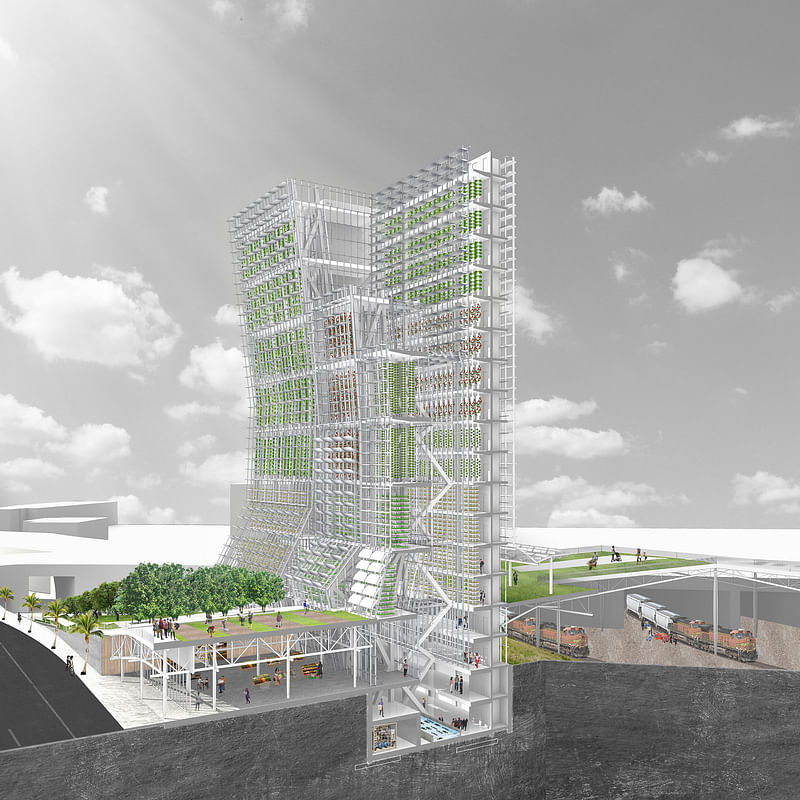
1st Place: VertiCali
Student: Mario Ramos
Faculty Sponsor: Peter Stapleton Raab
School: Texas Tech University
Project excerpt: “Industrialized food production divorces the connection to fresh greens for the citizens of Los Angeles's urban core. Food scarcity means trouble for many who don't know how to grow their food. Food growth experience belongs to individuals located in rural farms. Education in food growth promotes healthy and sustainable life styles that have positive effects on the local community. VertiCali is a beacon of edible light, exposing is green contents to promote local food growth, healthy life styles, and sustainable communities. It vegetates the urban core and connects Downtown L.A. and East L.A. by creating a central food hub in the Arts District. It expands its boundaries into the revitalized L.A. River alongside the 4th Street Bridge and over existing rail lines to provide pedestrian pathways of elevated landscape. Its program consists of a market, community gardens, education areas, and different levels showcasing innovative farming techniques...”

RELATED NEWS Ten projects distinguished for stellar Steel-Frame Building Design in 2016 IDEAS² Awards
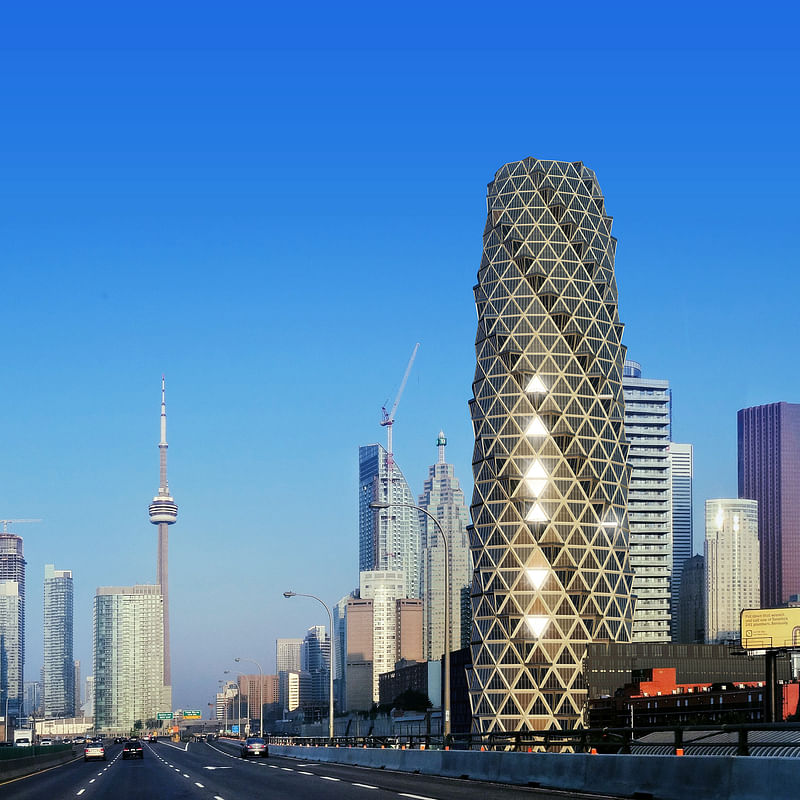
2nd Place: Diagroup Tower
Students: Scott Proudfoot, Mengdie Zhang, Sarah Donaldson, Gabriela Chorobik
Faculty Sponsor: Terri Meyer Boake
School: University of Waterloo
Project excerpt: “Diagroup Tower brings a diverse mixed-use program to Toronto's housing projects district. These former industrial lands are bounded by rail infrastructure on the city's waterfront. Development pressure threatens to replace these low income neighborhoods with residential towers. Diagroup takes a stand in bringing business and industrial space back into these neighborhoods, with an increase in rental housing and some luxury residential to subsidize the rest. The goal is the upgrading of tired low income housing into a denser and more diverse neighborhood. The intention Diagroup Tower's massing is to mediate between local mid-scale residential and Toronto's downtown tower developments. A courtyard typology was selected to mirror the rhythm of the existing townhouses' public and semi-public spaces while still increasing density...”
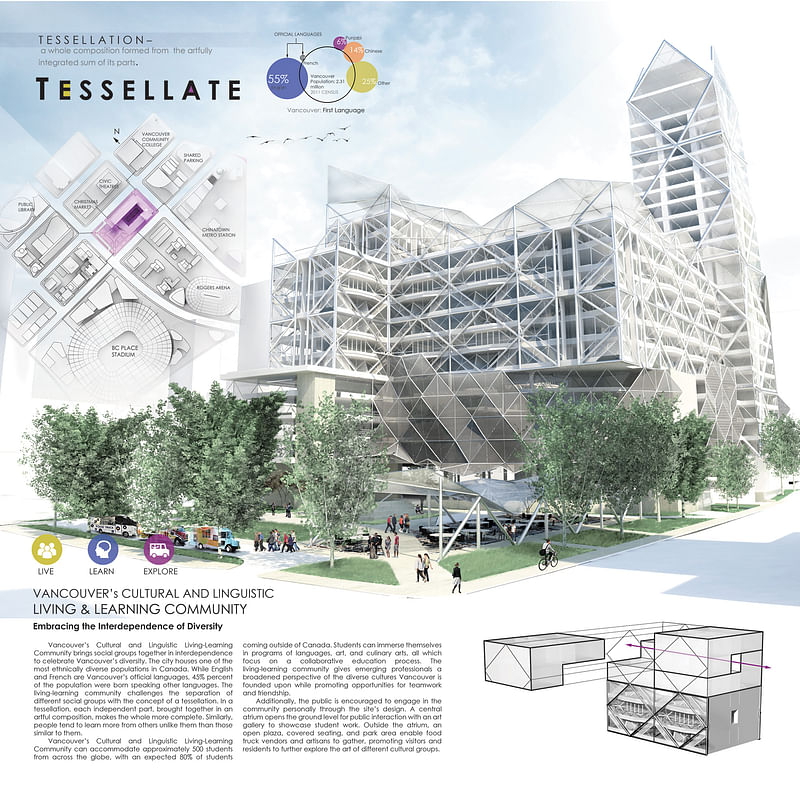
3rd Place: Tessellate
Student: Megan Stenftenagel
Faculty Sponsor: Robert J. Koester
School: Ball State University
Project excerpt: “Vancouver’s Cultural and Linguistic Living-Learning Community brings social groups together in interdependence to celebrate Vancouver’s diversity. The city houses one of the most ethnically diverse populations in Canada. While English and French are Vancouver’s official languages, 45% percent of the population were born speaking other languages. The living-learning community challenges the separation of different social groups with the concept of a tessellation. In a tessellation, each independent part, brought together in an artful composition, makes the whole more complete. Similarly, people tend to learn more from others unlike them than those similar to them. Vancouver’s Cultural and Linguistic Living-Learning Community can accommodate approximately 500 students from across the globe, with an expected 80% of students coming outside of Canada. Students can immerse themselves in programs of languages, art, and culinary arts, all which focus on a collaborative education process...”
Voided Tower
Students: Janusz Ziobrowski, Karolina Rachwal, Yiwen Wu
Faculty Sponsor: Kevin Stevens
School: University of Tennessee-Knoxville
IM//PORT L.A. Tri-Commerce Epicenter for Los Angeles
Students: Michael Chin, Alexander Kim
Faculty Sponsor: Gerard Smulevich
School: Woodbury University
OPEN CATEGORY WINNERS
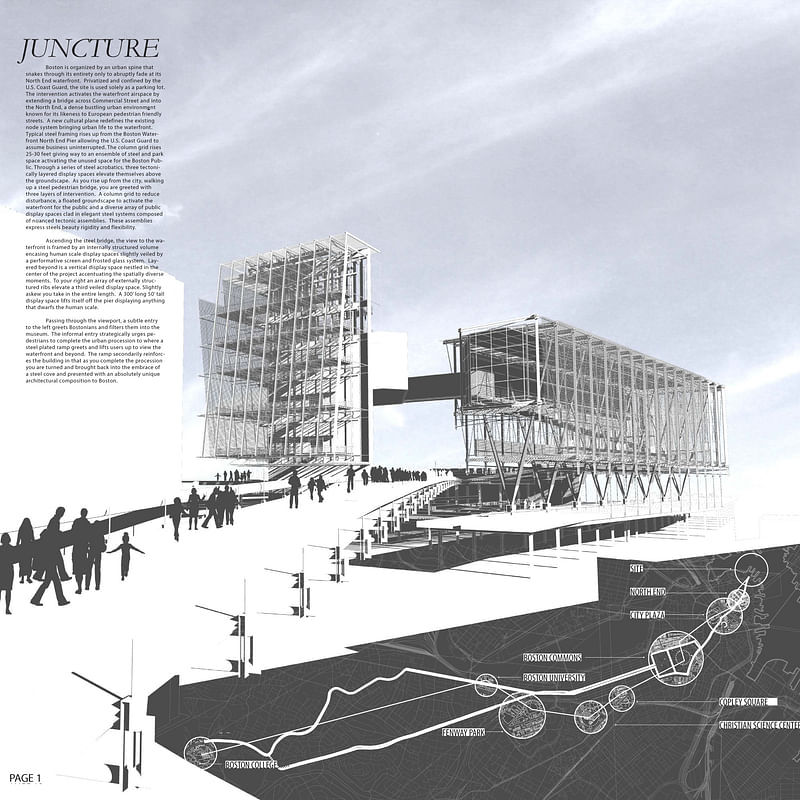
First Place: Juncture
Students: John Berger, Sasha Francoeur
Faculty Sponsor: Robert Gillig
School: Boston Architectural College
Project description: “Boston is organized by an urban spine that snakes through its entirety only to abruptly fade at its North End waterfront. Privatized and confined by the U.S. Coast Guard, the site is used solely as a parking lot. The intervention activates the waterfront airspace by extending a bridge across Commercial Street and into the North End, a dense bustling urban environment known for its likeness to European pedestrian friendly streets. A new cultural plane redefines the existing node system bringing urban life to the waterfront. Typical steel framing rises up from the Boston Waterfront North End Pier allowing the U.S. Coast Guard to assume business uninterrupted. The column grid rises 25-30 feet giving way to an ensemble of steel and park space activating the unused space for the Boston Public. Through a series of steel acrobatics, three tectonically layered display spaces elevate themselves above the groundscape. As you rise up from the city, walking up a steel pedestrian bridge, you are greeted with three layers of intervention. A column grid to reduce disturbance, a floated groundscape to activate the waterfront for the public and a diverse array of public display spaces clad in elegant steel systems composed of nuanced tectonic assemblies. These assemblies express steels beauty rigidity and flexibility.”

RELATED NEWS CTBUH reveals 2016 Tall Building Award winners
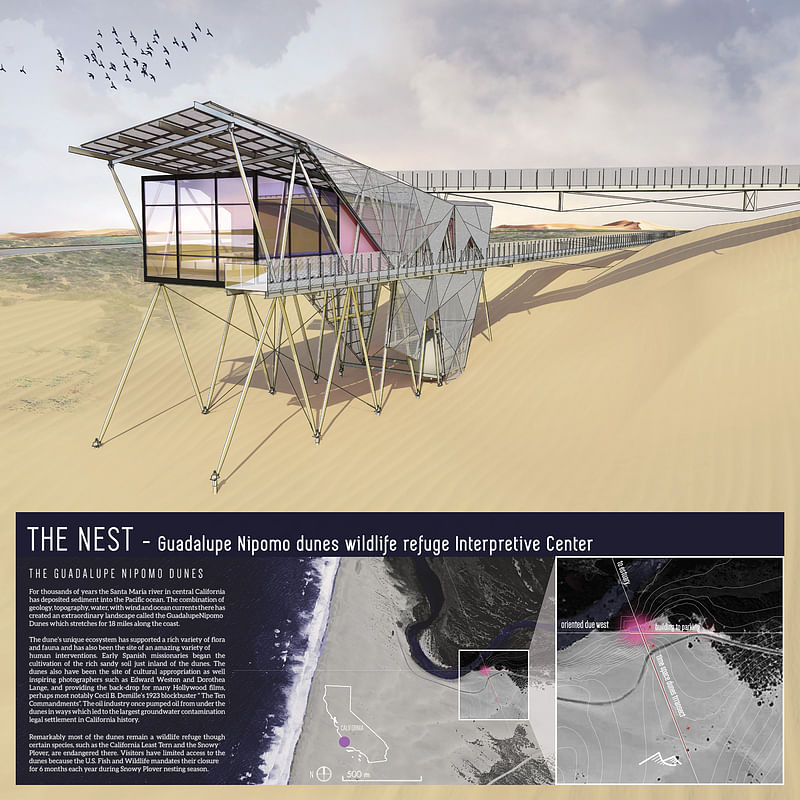
2nd Place: THE NEST - Guadalupe Nipomo Dunes Wildlife Refuge Interpretive Center
Student: Edern Audrain
Faculty Sponsor: Jonathan Reich
School: California Polytechnic State University
Project excerpt: “The purpose of the Guadalupe Nipomo Dunes Interpretive Center is to provide basic visitor information and facilities at the entrance to the dunes and also to provide visitors fully accessible but limited access, to experience and thus hopefully value this landscape, by means of a controlled walkway into the dunes which will not interfere with the seasonal sensitivities of the flora and fauna there. The âpassive designedâ building, intended to take advantage of the mild and very constant temperatures there, is equipped with triple glazing and extra insulation and mainly serves to protect users from the wind and wind-driven sand. Steel is proposed as the dominate structural material for its efficient strength to weight ratio and for minimizing the on-site construction impact through use of carefully designed parts which can be installed piece by piece.”
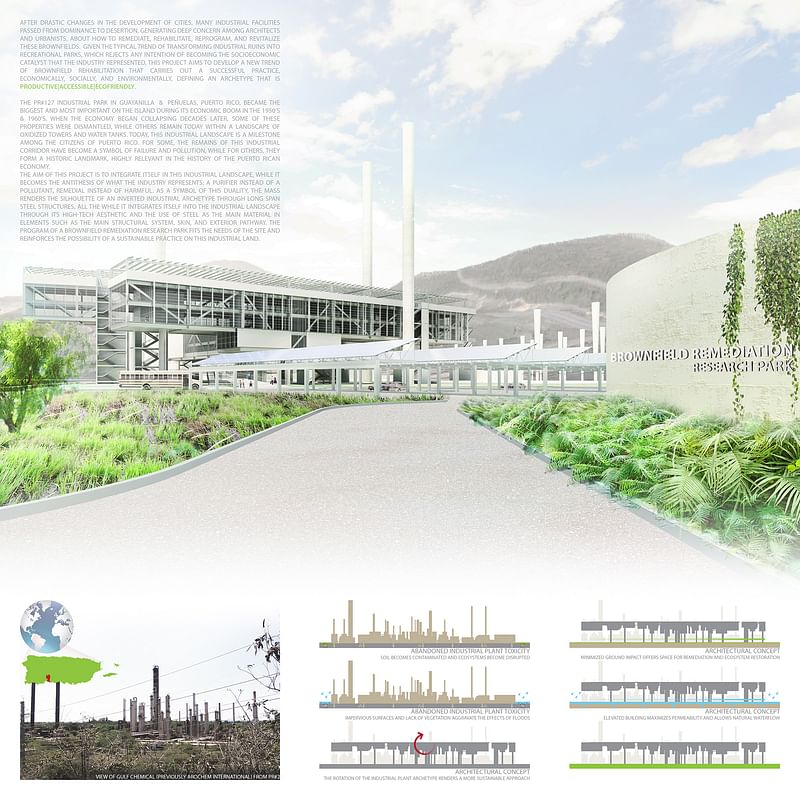
Productive | Accessible | Ecofriendly: Brownfield Remediation Research Park
Student: Jesus J. Alfonso Pagan
Faculty Sponsors: Luis Ayala-Rubio, Alberto Dueño Jordán, Jesús O. García Beauchamp, Carlos Quiñones-Maymí, Luis Alonso Conty
School: Pontifical Universidad Catolica de Puerto Rico
Project excerpt: “...Considering the recent trend of transforming industrial ruins into recreational parks, which rejects any intention of becoming the socioeconomic catalyst that the industry represented, this project aims to develop a new trend of brownfield rehabilitation that carries out a successful practice ‐economically, socially and environmentally — defining an archetype that is Productive|Accessible|Ecofriendly [...] The aim of this project is to integrate itself in this industrial landscape, while it becomes the antithesis of what the industry represents: a purifier instead of a pollutant, remedial instead of harmful. As a symbol of this duality, the proposed mass renders the silhouette of an inverted industrial archetype through long span steel structures, all the while integrating itself into the industrial landscape through its high‐ tech aesthetic and the use of steel as the main material in elements such as the main structural system...”
INNOVATION INITIATION within the Raymond Creative Enterprise Zone
Student: Bridget Geissler
Faculty Sponsor: Nat Madson
School: University of Minnesota
Creature
Student: Xiaoyin Xie
Faculty Sponsor: Thomas Fowler
School: California Polytechnic State University
Unearth Archaeology Research Center
Students: Trent Harrison, Andrew Lopez
Faculty Sponsor: Kevin J. Singh
School: Louisiana Tech University
You can find more project images below.



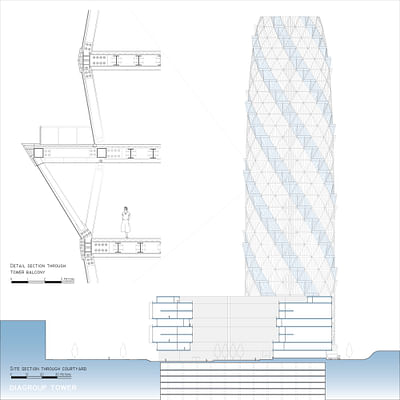
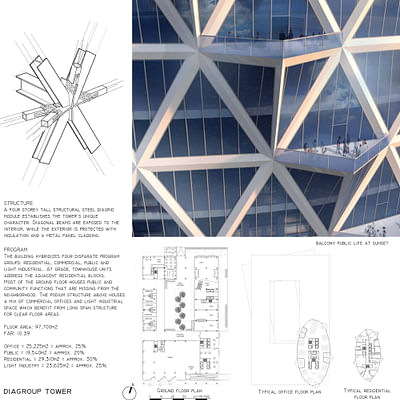
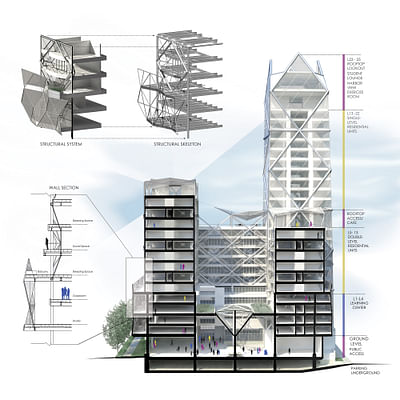
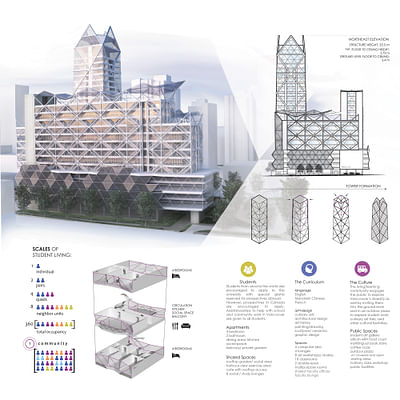

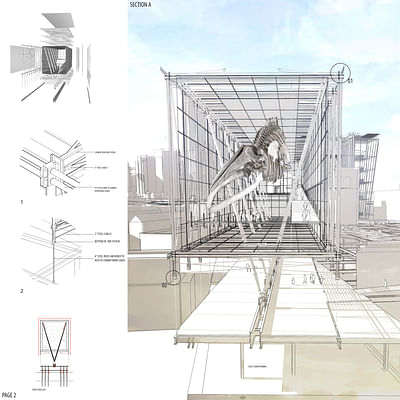
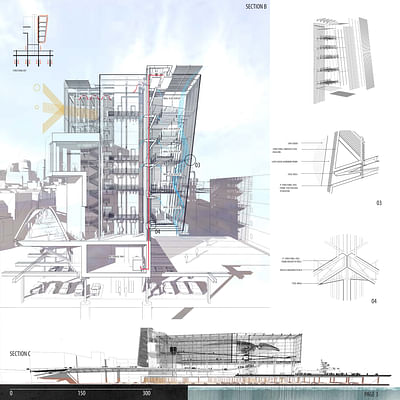
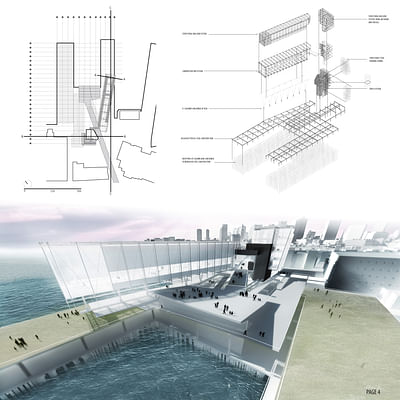

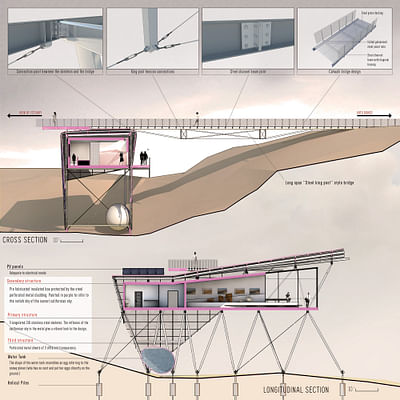


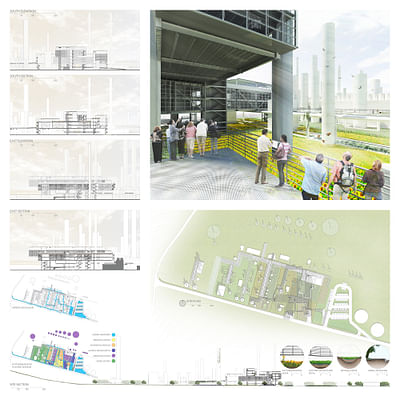
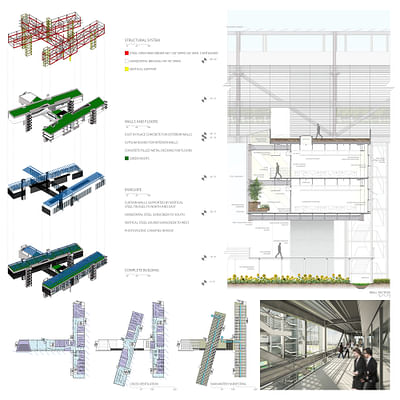

Share
0 Comments
Comment as :